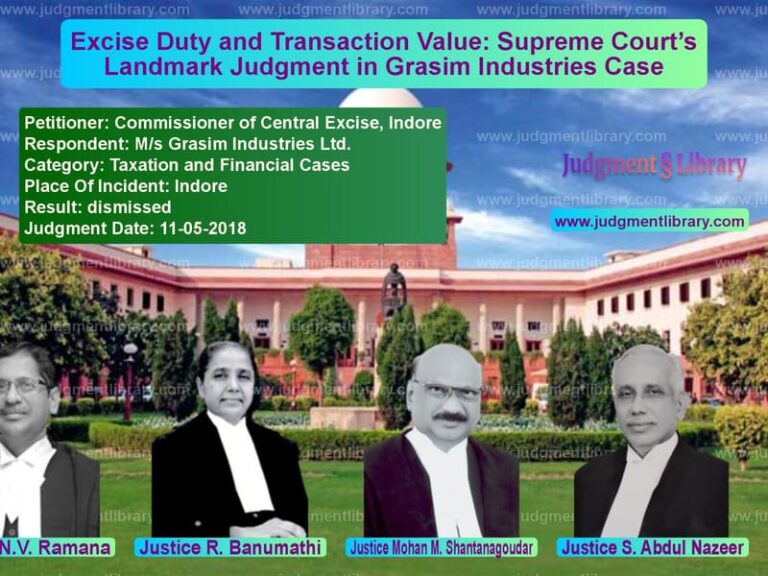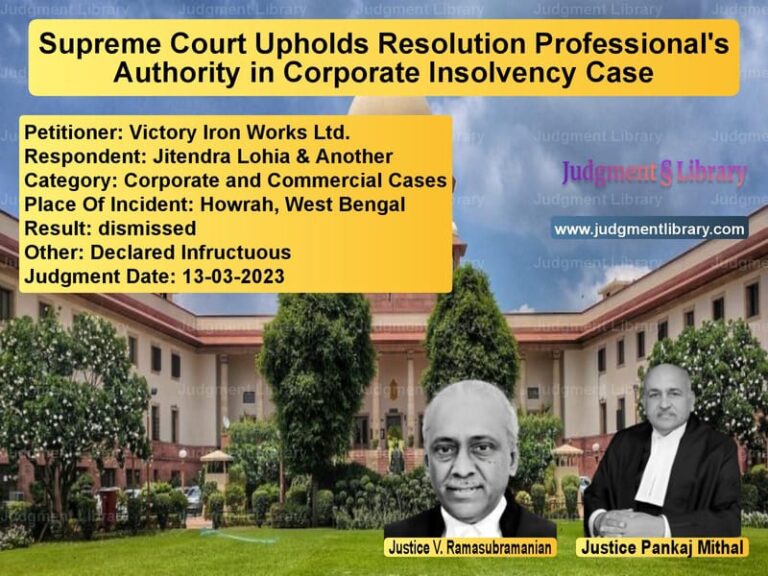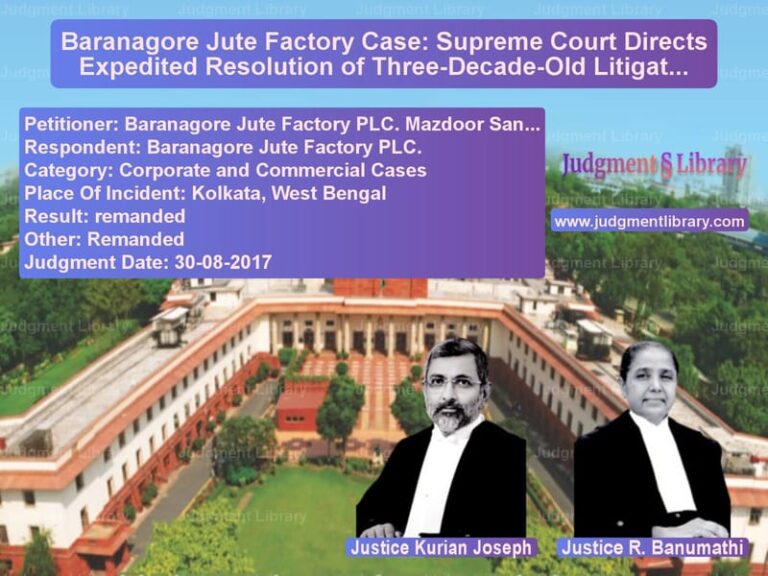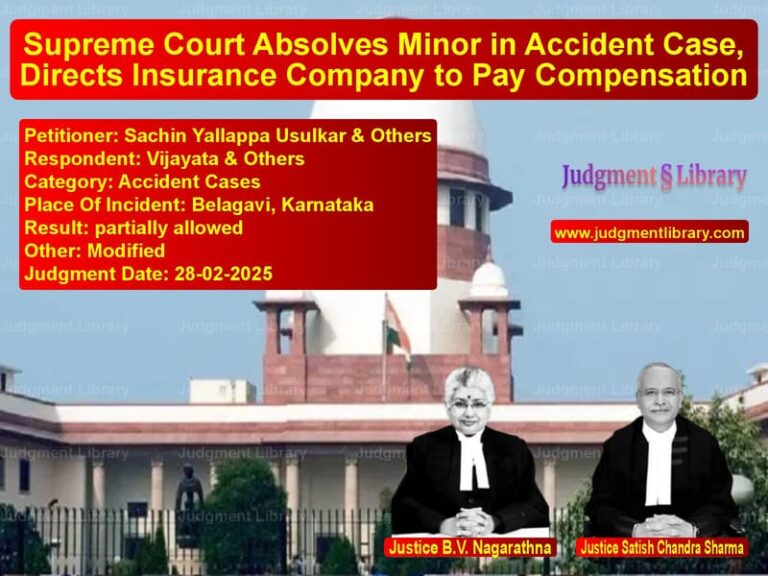Supreme Court Issues Directives for Effective Implementation of Hit and Run Compensation Scheme
The Supreme Court of India, in a landmark ruling, addressed the ineffective implementation of the Compensation for Victims of Hit and Run Motor Accidents Scheme, 2022. The Court emphasized the need for proactive measures to ensure victims of hit-and-run accidents receive timely and adequate compensation, as mandated by Section 161 of the Motor Vehicles Act, 1988. The judgment underscored the duty of law enforcement and administrative agencies in informing victims about their rights and facilitating claim settlements.
Background of the Case
The case originated from a public interest litigation (PIL) filed by S. Rajaseekaran, highlighting the poor execution of hit-and-run compensation provisions. The petitioner argued that despite the enactment of the 2022 Scheme, victims were not benefiting due to lack of awareness, bureaucratic hurdles, and administrative inefficiencies.
Under Section 161 of the Motor Vehicles Act, victims of hit-and-run accidents are entitled to compensation of Rs. 2 lakhs in case of death and Rs. 50,000 in case of grievous injury. However, government data revealed a glaring discrepancy between the number of reported accidents and compensation claims filed. The petitioner sought judicial intervention to enforce compliance with the scheme.
Key Issues Addressed by the Supreme Court
The Supreme Court identified several critical gaps in the implementation of the Compensation Scheme:
- Low number of claims filed despite a high number of hit-and-run cases.
- Lack of public awareness about the scheme.
- Inadequate role of law enforcement agencies in guiding victims.
- Absence of a proper monitoring mechanism.
Petitioner’s Arguments
The petitioner contended that:
- The Compensation Scheme remained largely ineffective as victims were unaware of its existence.
- The government failed to take necessary steps to promote awareness and ensure access to benefits.
- The administrative process for claim settlement was cumbersome and lacked transparency.
- The compensation amounts fixed in 2022 were inadequate and required periodic revision to reflect inflation.
Respondent’s Arguments
The Union of India and other respondents, while acknowledging the gaps, submitted that:
- Steps were being taken to improve awareness and streamline processes.
- The 2022 Scheme introduced structural reforms to expedite claim settlements.
- The low claim rate was due to victims’ reluctance to approach authorities rather than administrative lapses.
- The government was open to considering modifications to enhance the scheme’s effectiveness.
Supreme Court’s Ruling
The Supreme Court, after thorough deliberation, issued a series of directives to ensure the effective implementation of the hit-and-run compensation scheme.
1. Formation of Monitoring Committees
The Court ordered the establishment of district-level Monitoring Committees comprising:
- Secretary of the District Legal Services Authority (convener).
- Claims Enquiry Officer.
- A police officer of Deputy Superintendent rank.
These committees are tasked with overseeing the implementation of the scheme and ensuring victims receive proper guidance.
2. Obligation of Police to Inform Victims
The Court directed that police officers handling hit-and-run cases must:
- Inform victims or their families about their right to claim compensation.
- Provide them with contact details of the relevant Claims Enquiry Officer.
- Ensure that First Accident Reports (FAR) are promptly forwarded to the appropriate authorities.
3. Timelines for Claim Processing
To expedite claim settlements, the Court set the following deadlines:
- The Claims Enquiry Officer must process applications within one month of receipt.
- The Claims Settlement Commissioner must approve or reject claims within 15 days of receiving the report.
- General Insurance Council must disburse compensation within 15 days of approval.
4. Public Awareness Campaigns
The Court ordered the Standing Committee overseeing the scheme to launch nationwide awareness campaigns, including:
- Television and radio advertisements.
- Display of scheme details in police stations and hospitals.
- Distribution of pamphlets at accident-prone locations.
5. Review of Compensation Amount
Considering the rising cost of living, the Court directed the Central Government to evaluate and propose periodic increases in compensation amounts. It instructed the government to decide on enhanced amounts within eight weeks.
6. Extension of Time for Old Claims
The Court recognized that many victims under the previous Solatium Scheme (1989) were unaware of their right to claim compensation. It directed the government to consider allowing late applications under a one-time extension.
7. Submission of Compliance Reports
The Court mandated that all relevant authorities submit compliance reports by April 22, 2024, detailing steps taken to implement the directives.
Significance of the Judgment
The Supreme Court’s ruling establishes crucial precedents for public welfare schemes:
- Enforcement of Rights: Victims must be proactively informed about their rights.
- Administrative Accountability: Law enforcement and insurance councils must ensure efficient processing.
- Periodic Compensation Adjustments: Fixed compensation amounts should reflect inflationary trends.
- Judicial Oversight: Courts will continue monitoring implementation through compliance reports.
Conclusion
This judgment marks a significant step in ensuring that victims of hit-and-run accidents receive timely and fair compensation. It highlights the judiciary’s role in enforcing government accountability and protecting the rights of accident victims.
Petitioner Name: S. Rajaseekaran.Respondent Name: Union of India & Ors..Judgment By: Justice Abhay S. Oka, Justice Pankaj Mithal.Place Of Incident: India.Judgment Date: 12-01-2024.
Don’t miss out on the full details! Download the complete judgment in PDF format below and gain valuable insights instantly!
Download Judgment: s.-rajaseekaran-vs-union-of-india-&-ors-supreme-court-of-india-judgment-dated-12-01-2024.pdf
Directly Download Judgment: Directly download this Judgment
See all petitions in Compensation Disputes
See all petitions in Motor Vehicle Act
See all petitions in Negligence Claims
See all petitions in Judgment by Abhay S. Oka
See all petitions in Judgment by Pankaj Mithal
See all petitions in allowed
See all petitions in supreme court of India judgments January 2024
See all petitions in 2024 judgments
See all posts in Accident Cases Category
See all allowed petitions in Accident Cases Category
See all Dismissed petitions in Accident Cases Category
See all partially allowed petitions in Accident Cases Category







